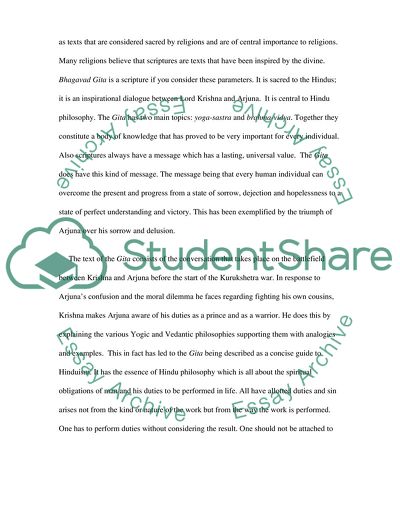Cite this document
(“Bhagavad Gita or The Divine Song Essay Example | Topics and Well Written Essays - 1750 words”, n.d.)
Bhagavad Gita or The Divine Song Essay Example | Topics and Well Written Essays - 1750 words. Retrieved from https://studentshare.org/religion-and-theology/1562273-bhagavad-gita-or-the-divine-song
Bhagavad Gita or The Divine Song Essay Example | Topics and Well Written Essays - 1750 words. Retrieved from https://studentshare.org/religion-and-theology/1562273-bhagavad-gita-or-the-divine-song
(Bhagavad Gita or The Divine Song Essay Example | Topics and Well Written Essays - 1750 Words)
Bhagavad Gita or The Divine Song Essay Example | Topics and Well Written Essays - 1750 Words. https://studentshare.org/religion-and-theology/1562273-bhagavad-gita-or-the-divine-song.
Bhagavad Gita or The Divine Song Essay Example | Topics and Well Written Essays - 1750 Words. https://studentshare.org/religion-and-theology/1562273-bhagavad-gita-or-the-divine-song.
“Bhagavad Gita or The Divine Song Essay Example | Topics and Well Written Essays - 1750 Words”, n.d. https://studentshare.org/religion-and-theology/1562273-bhagavad-gita-or-the-divine-song.


